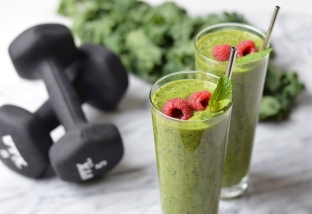A person's energy and appetite are under the control of hormones, the balance of which can be disturbed as a result of lack of sleep, stress and other factors. The levels of sex hormones in the female body are known to fluctuate throughout the menstrual cycle, so this factor should also be taken into account when developing an optimal weight loss strategy.
For example, during the luteal phase, energy intake and expenditure tend to increase, which is why girls and women are drawn to high-carbohydrate and fatty foods. About the features of nutrition during the menstrual cycle, estet-portal.com will tell in this article.
The Menstrual Cycle and Nutrition: Research by Dr Geiker and Keel
During the study, Dr. Geiker and Keel and colleagues divided 60 overweight women into two groups. For six months, both groups followed a calorie-restricted diet (about 1600 kcal per day). However, for one group of women, the researchers adjusted nutrient intake according to the phases of the menstrual cycle.
Dr. Nina Geiker explained: “We increased the amount of protein consumed by volunteers during the phases of the menstrual cycle that are characterized by increased hunger. And in the phases during which women are drawn to fatty and carbohydrate foods, we allowed the subjects to consume a small amount of dark chocolate. According to the results of the study, women whose diet was adjusted in accordance with the
menstrual cycle, on average, lost 4 kg more than those who lost weight from the second group.
According to the results of the study, women whose diet was adjusted in accordance with the menstrual cycle, on average, lost 4 kg more than those who lost weight from the second group.
 Despite the findings, the team has stated that further research is needed, but for effective weight management, it really helps to pay attention to exercise and nutrition during the different phases of the menstrual cycle.
Despite the findings, the team has stated that further research is needed, but for effective weight management, it really helps to pay attention to exercise and nutrition during the different phases of the menstrual cycle.
Phases of the menstrual cycle, nutrition and exercise for weight control
Early Follicular Phase (Day 1–4): Dr. Geiker states that this phase of the menstrual cycle is probably the lowest energy level in the female body. Therefore, it is worth giving preference to "light" exercises: yoga, walking, stretching. As a rule, during this period, smaller portions of food and snacks are required to fill up.
Late Follicular Phase (Day 5-15): In this phase of the menstrual cycle, it is advisable to increase the intensity and frequency of training (during the study, women did
strength trainingtwice a week, as well as cardio training on other days). As hunger increases, researchers recommend adding more protein to the diet.
The above study once again confirms that you need to listen to your body.Luteal Phase (Days 16-28): During this phase of the menstrual cycle, meals tend to be higher in calories, but you can spend the energy gained on intense exercise. Any physical activity during this period will be easier, so try not to miss this chance and increase the intensity and frequency of training.
Try to eat more healthy fats (avocados, olive oil, nuts) and proteins, avoiding high-carbohydrate foods whenever possible. For the last 4 days of your cycle, eat small amounts of dark chocolate to satisfy your sugar cravings without compromising your figure.
Read also:
6 myths about the menstrual cycle: debunking and confirmingIn other words, the above study once again confirms that you need to listen to your body. If on certain days of your menstrual cycle you feel like eating more than usual, satisfy your hunger with healthy foods. And use the increased energy level for more intense exercises. Women with a stable menstrual cycle can better anticipate fluctuations in energy levels and appetite and plan their training and nutrition schedule according to their body's needs.






Add a comment